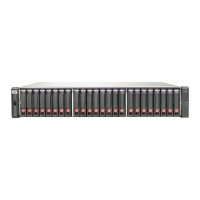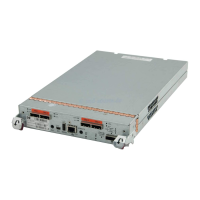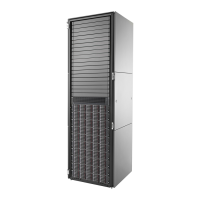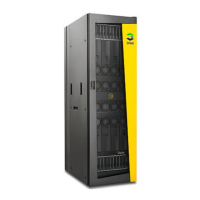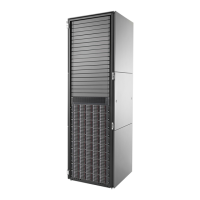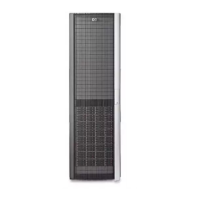22 Getting started
• For maximum use of a dual-controller system’s resources, each controller should own a similar number
of vdisks.
• Set the chunk size to match the transfer block size of the host application.
Related topics
• About RAID levels on page 30
• About spares on page 22
• About volumes on page 23
• Vdisk topics in Provisioning the system on page 59
• Configuring a vdisk on page 55
• Verifying a vdisk on page 85
• Scrubbing a vdisk on page 85
• Viewing information about a vdisk (page 92), all vdisks (page 91), or the system (page 89)
• Removing a vdisk from quarantine on page 86
About spares
A controller automatically reconstructs a redundant (fault-tolerant) vdisk (RAID 1, 3, 5, 6, 10, 50) when one
or more of its disks fails and a compatible spare disk is available. A compatible disk has enough capacity
to replace the failed disk and is the same type (SAS or SATA).
There are three types of spares:
• Dedicated spare. Reserved for use by a specific vdisk to replace a failed disk. Most secure way to
provide spares for vdisks but expensive to reserve a spare for each vdisk.
• Global spare. Reserved for use by any redundant vdisk to replace a failed disk.
• Dynamic spare. An available compatible disk that is automatically assigned to replace a failed disk in
a redundant vdisk.
When a disk fails, the system looks for a dedicated spare first. If it does not find a dedicated spare, it looks
for a global spare. If it does not find a compatible global spare and the dynamic spares option is enabled,
it takes any available compatible disk. If no compatible disk is available, reconstruction cannot start.
A best practice is to designate spares for use if disks fail. Dedicating spares to vdisks is the most secure
method, but it is also expensive to reserve spares for each vdisk. Alternatively, you can enable dynamic
spares or assign global spares.
Related topics
• Configuring dynamic spares on page 50
• Managing dedicated spares on page 55
• Managing global spares on page 62
• Using the Provisioning Wizard on page 59
• Creating a vdisk on page 61
• Viewing information about a vdisk (page 92) or all vdisks (page 91)
